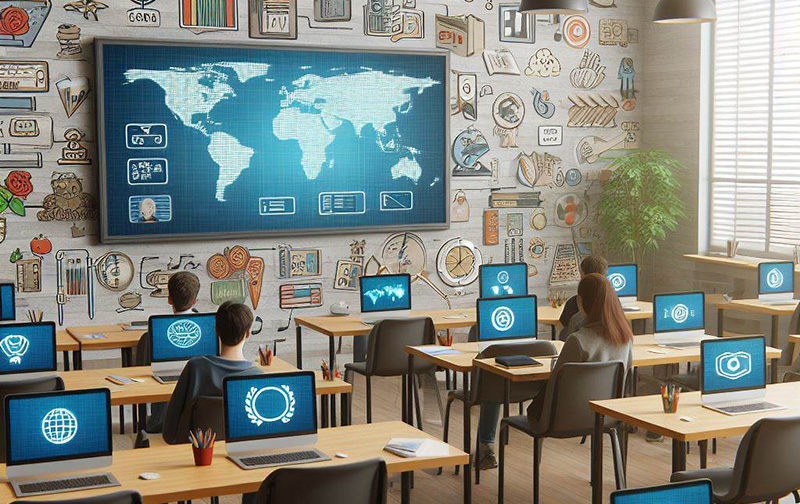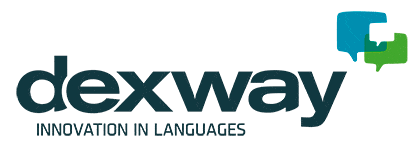Educational technology, or EdTech, is a trend that is increasingly gaining strength in the field of language teaching. It is associated with capitalising on the advantages of digital tools to improve both the learning process and student experience. But how to introduce EdTech in language classrooms? What benefits does it have for teachers and students? What challenges and difficulties does it entail? Here we offer some practical tips to help you incorporate EdTech into your classes effectively and easily.

What is EdTech and why is it important in language classrooms?
The term EdTech comes from the combination of the words education and technology. It refers to the use of technology to promote, facilitate and improve the educational process. EdTech ranges from online platforms to mobile applications, including interactive devices, virtual reality, artificial intelligence and much more.
EdTech in language classrooms has multiple benefits for both teachers and students. Some of these benefits are that it:
- Allows you to personalise learning according to the needs, level and pace of each student or group of students.
- Facilitates access to a wide variety of resources and teaching materials, both inside and outside the classroom.
- Promotes the motivation, interest and participation of students, by making classes more dynamic, fun and interactive.
- Improves communication and collaboration between teachers and students, as well as among the students themselves.
- Promotes the development of digital, linguistic and transversal skills, such as creativity, critical thinking or problem solving.
How to introduce EdTech in language classrooms?
Introducing educational technology into face-to-face language classes doesn’t have to be complicated or expensive. There are many options and digital solutions that adapt to different contexts, objectives and budgets. Here are some tips so you can start implementing EdTech in your classes:
#1. Define your objectives and needs
Before choosing a digital tool or platform, it is important to be clear about what you want to achieve with it and what needs must be covered. For example, do you want to improve your students’ listening comprehension? Do you want to offer complementary activities for them to practise outside the classroom? Do you want to evaluate progress on an ongoing basis? Depending on your objectives and needs, you can select the most appropriate option for your students.
#2. Search for information and opinions
Once you are clear about what you want to achieve with EdTech in language classrooms, it is useful to seek information and opinions about the different tools and platforms available. You can consult specialised sources, such as blogs, magazines or podcasts on education and innovation. You can also ask for recommendations from other teachers who have already used EdTech in their classes or ask our Dexway experts for advice on e-learning for language teaching. This way you will be able to find out more about the advantages and disadvantages of each option, as well as its technical and pedagogical characteristics.
#3. E-learning training
To successfully introduce EdTech into language classrooms, it is essential that teachers and students are trained to use the chosen digital tools or platforms. Therefore, it is advisable to spend time training yourself and your students on how to use them correctly. You can consult tutorials, manuals, videos or online courses that help you become familiar with how the tools work and what possibilities each option offers. You can also create activities or dynamics so your students learn to use them in a fun, practical way. Our pedagogical advisors can also help you plan the dynamics of your classes.
#4. Integrate EdTech into the methodology
Last but not least, it is essential that EdTech is integrated into the language teaching methodology. It is not about using technology just for the sake of it, but rather doing it with purpose and pedagogical coherence; using its full potential to increase performance in the classroom. EdTech should be a complement and support to teaching work, not a substitute or an end in itself. Therefore, classes must be planned taking into account how EdTech will be incorporated into the different phases and activities, and how it will be combined with other resources and strategies.
Examples of EdTech in language classrooms
To offer some ideas of how EdTech can be introduced into language classrooms, let’s look at some examples of digital tools and platforms that you can use with your students and Dexway online English courses:
- Projection of lessons on digital whiteboards. Dexway lessons can be configured to be viewed in class on the whiteboard, as homework, or as review for study inside or outside the classroom through apps.
- Gamification: Dexway courses have gamification dynamics that allow you to keep track of class participation easily and simply.
- Automatic evaluation of exercises, which allows you to see the weaknesses of a group immediately and therefore easily adapt future lessons.
- Use of video conferencing for sessions outside the classroom (our LMS can integrate Zoom, MS Teams or Google Meet video conferencing software).
EdTech in language classrooms is an opportunity to improve the quality and effectiveness of foreign language teaching and learning. However, to take full advantage of its benefits, it is necessary to follow a series of pedagogical tips and criteria. We hope that this article helps you better understand what EdTech is, why it is important in language classrooms and how to introduce it in a class. To learn more about EdTech or our digital solutions for language teaching, do not hesitate to contact us.
You may also like:

